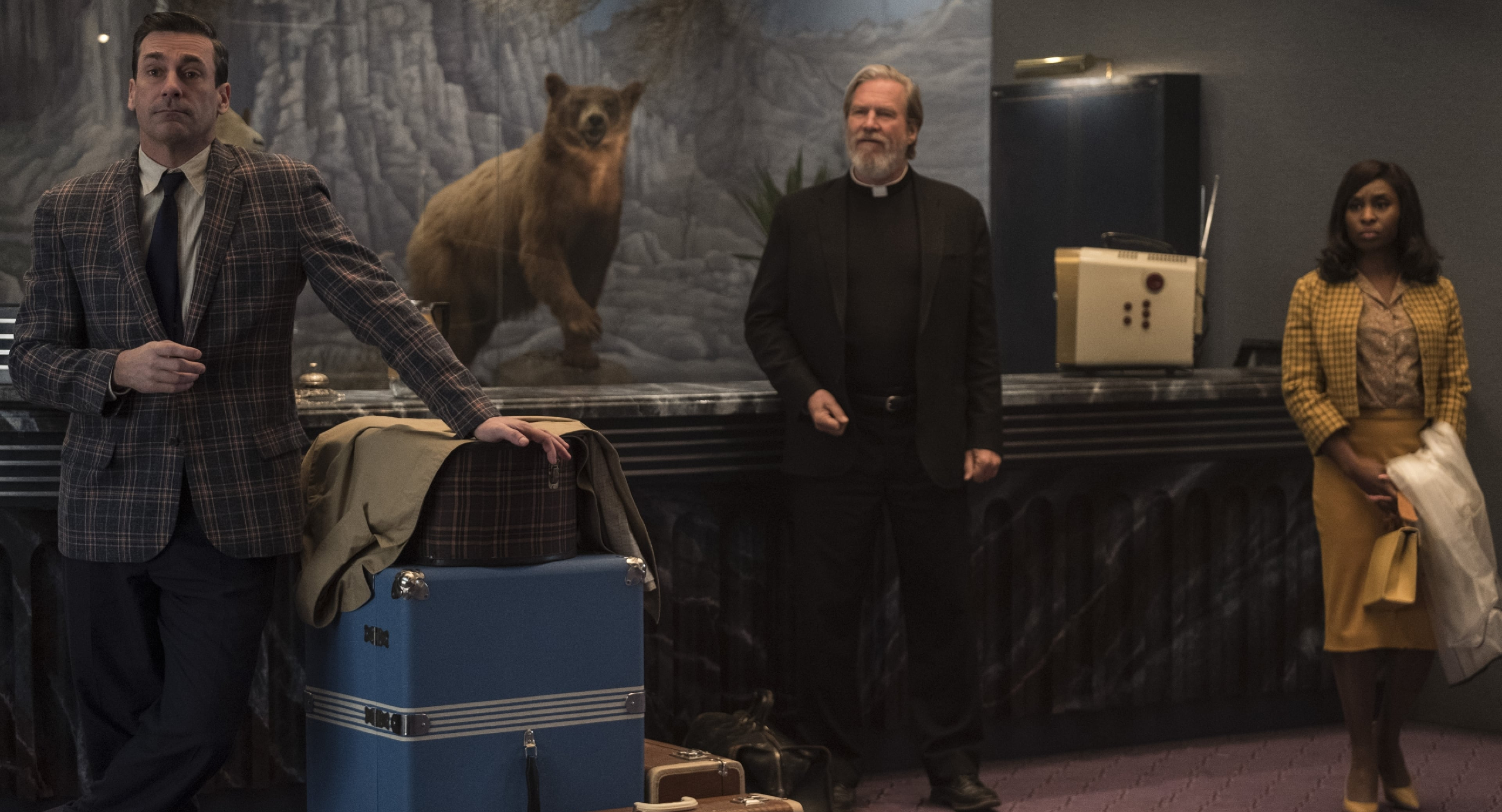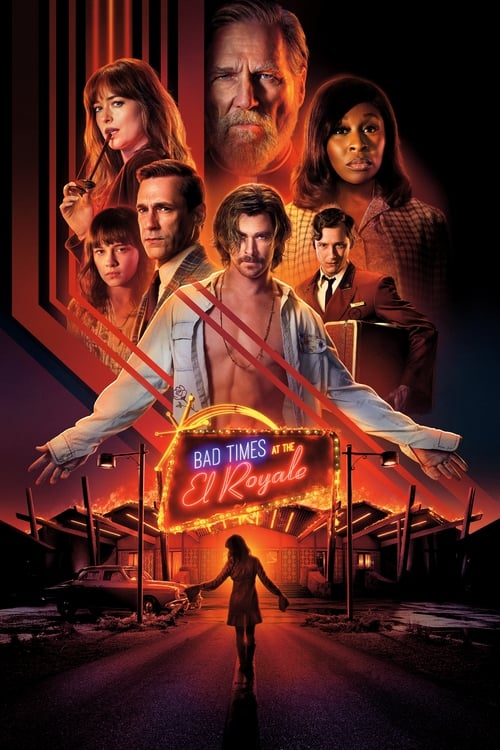Bad Times at the El Royale – Film Review
Published August 13, 2023

The El Royale is run-down hotel that sits on the border between California and Nevada. It soon becomes a seedy battleground when seven strangers — a cleric, a soul singer, a traveling salesman, two sisters, the manager and the mysterious Billy Lee — converge on a fateful night for one last shot at redemption before everything goes wrong.
In the realm of suspenseful and enigmatic storytelling, director Drew Goddard has always managed to carve out his own niche. With Bad Times at the El Royale, Goddard once again showcases his prowess in weaving intricate narratives and intriguing characters. Set against the backdrop of a 1960s hotel split between two states, the film serves up a visually captivating experience laden with tension, mystery, and moments of genuine brilliance. While it may not be without its faults, Bad Times at the El Royale takes audiences on a rollercoaster ride that, for the most part, leaves them both bewildered and entertained.
From the very first frame, the film establishes a palpable sense of time and place. The visual aesthetics, characterized by a rich palette of vibrant colors and meticulously designed sets, effortlessly transport viewers back to the 1960s. The El Royale hotel itself, with its half-California, half-Nevada designation, becomes a metaphor for the divided identities of the characters who inhabit it. Goddard’s deliberate use of camera angles and movement further adds to the atmosphere, creating an almost voyeuristic experience that mirrors the characters’ own secrets and motives.
Goddard’s storytelling has never been straightforward, and Bad Times at the El Royale is no exception. The film presents itself as a puzzle, with each character carrying their own baggage and motives, gradually converging in unexpected ways. While the non-linear narrative is a hallmark of Goddard’s style, it can sometimes feel convoluted, leading to moments of confusion rather than intrigue. However, for those willing to invest attention and patience, the eventual payoff is undoubtedly rewarding.
The cast of Bad Times at the El Royale is a standout, with each actor bringing their A-game to their respective roles. Jeff Bridges shines as the priest with a hidden past, delivering a performance that is both endearing and enigmatic. Cynthia Erivo steals scenes as a singer with a powerhouse voice and a mysterious agenda, while Chris Hemsworth offers a charismatic and menacing turn as a charismatic cult leader. The interactions between these characters, as they slowly reveal their true intentions, form the crux of the film’s tension and intrigue.
The film’s score, composed by Michael Giacchino, effectively complements the visual and narrative elements, capturing the era’s sensibilities while adding a modern twist. The soundtrack enhances the atmosphere of the hotel and its inhabitants, heightening the emotional impact of certain scenes. However, there are moments when the music can be overly melodramatic, potentially detracting from the subtleties of the unfolding mystery.
Bad Times at the El Royale delves into themes of morality, identity, and the blurred lines between right and wrong. The characters, each harboring their own secrets and burdens, navigate a complex web of choices that test their principles. The divided setting of the hotel serves as a microcosm of society, reflecting the characters’ internal conflicts. The film challenges viewers to question their own perceptions of good and evil, making it an intellectually engaging experience.
While the film’s deliberate pacing is essential to its suspense-building, there are instances where it struggles to maintain a consistent rhythm. The nonlinear narrative, though intriguing, can occasionally lead to a disjointed flow that hampers the overall engagement. Some scenes, while visually striking, may overstay their welcome, elongating the film’s runtime unnecessarily.
As the threads of the narrative finally converge, Bad Times at the El Royale attempts to deliver a climactic payoff that ties up loose ends. While the resolution offers closure to some character arcs, others are left open-ended, leaving audiences with a mix of satisfaction and curiosity. Goddard’s willingness to leave certain questions unanswered is a bold move that invites contemplation but might leave some viewers wanting more concrete conclusions.
Bad Times at the El Royale is an ambitious endeavor that succeeds in many aspects, but not without stumbling along the way. Drew Goddard’s ability to craft an intricate and visually captivating narrative is undeniable, and the film’s standout performances elevate it above its occasional convolutions. While it may not reach the heights of perfection, the movie manages to capture the essence of its era, weaving morality tales and identity crises into a suspenseful tapestry. For those willing to embrace its enigmatic storytelling style and appreciate its artistic merits, the film offers a cinematic experience that, despite its flaws, is well worth checking in to.
